








Indigenous Peoples Day was celebrated on Oct. 10 on campus at the President’s Patio. The performances featured the Young Eagle Dance Troupe, Aztec Dancers, and the Inter-Tribal Pow Wow Drumming Circle.


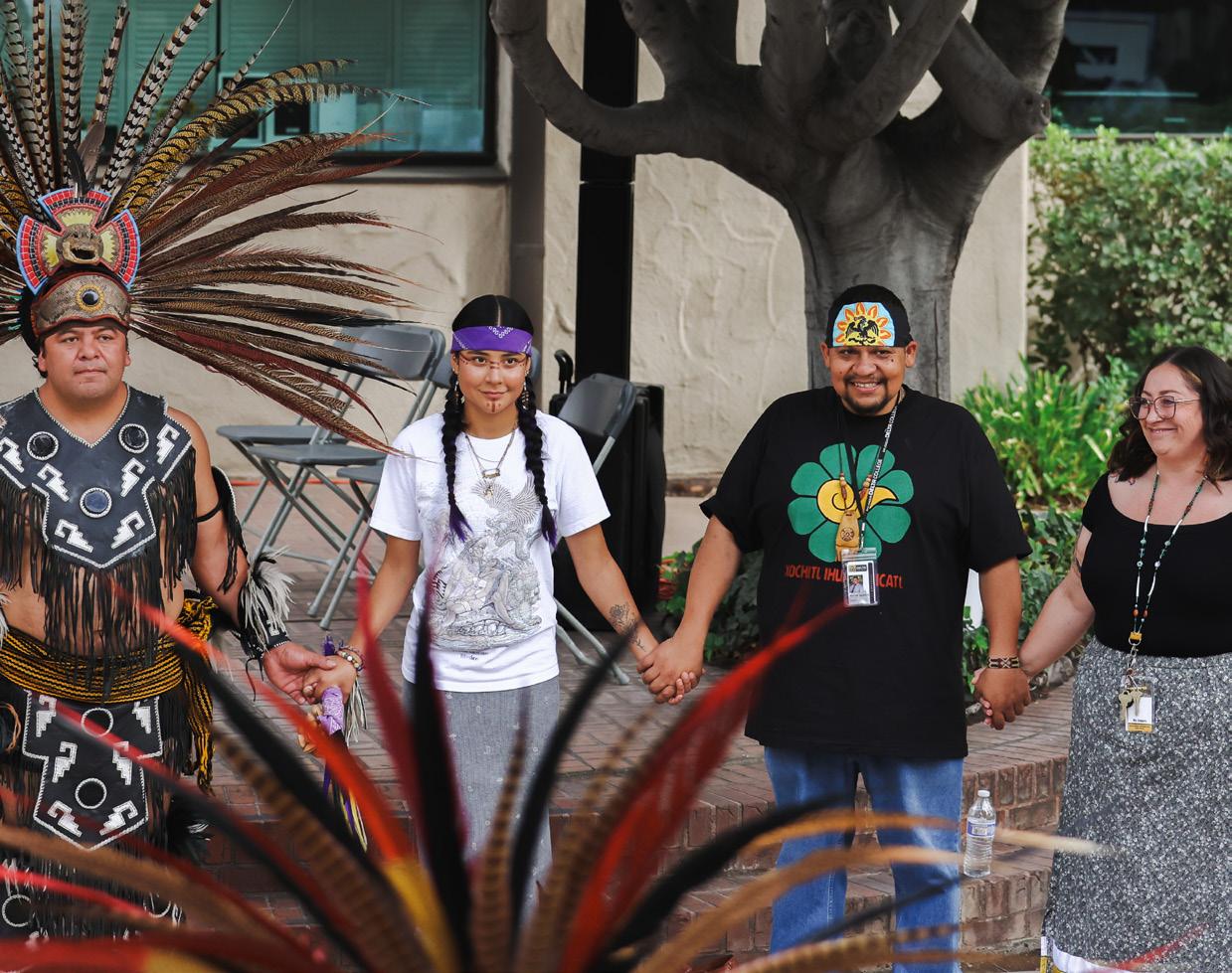
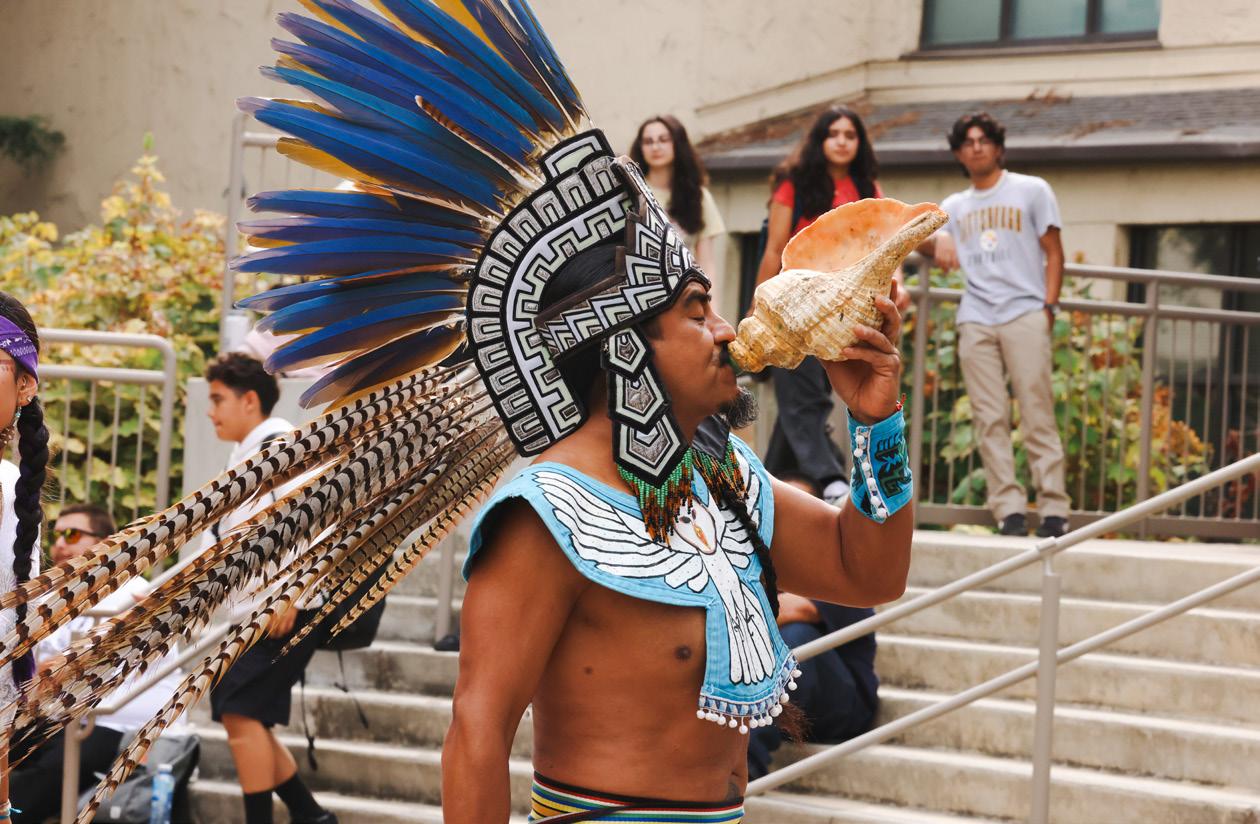

On the front: Val “Shadowhawk,” a member of the Aztec Dancer group, dances the “crow hop” to bring honor to the crow nation, at the Indigenous Peoples Celebration Event on campus. Above, top left and bottom right: Jesus Tecolotecpatl, Aztec Dancer, closes the ceremony by leading everyone with sayings of honor and thankfulness at the Indigenous Celebration Event. Middle: The Aztec Dancers, invite the crowd down to participate in the “Round Dance” on campus in Stockton on Oct. 10, 2024.
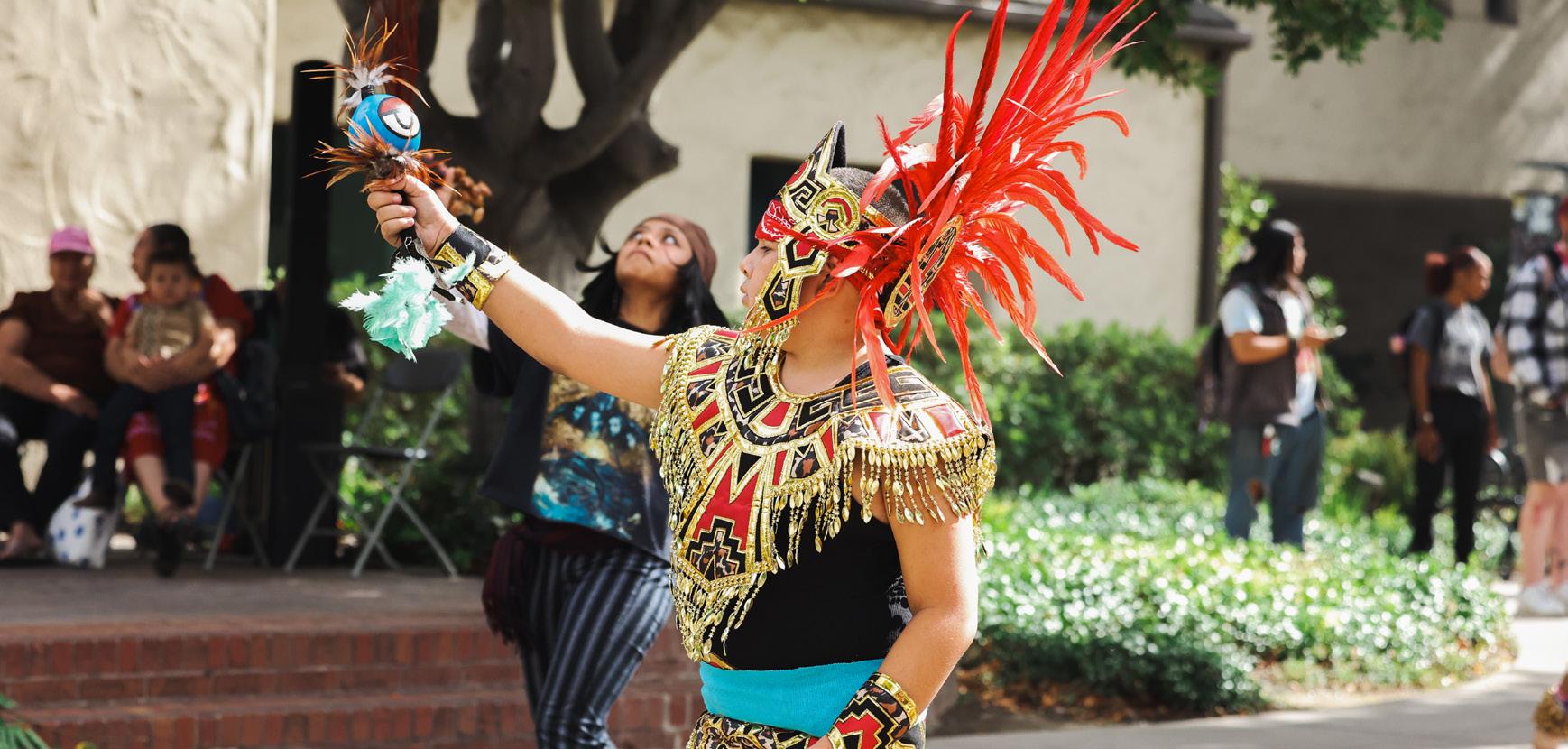
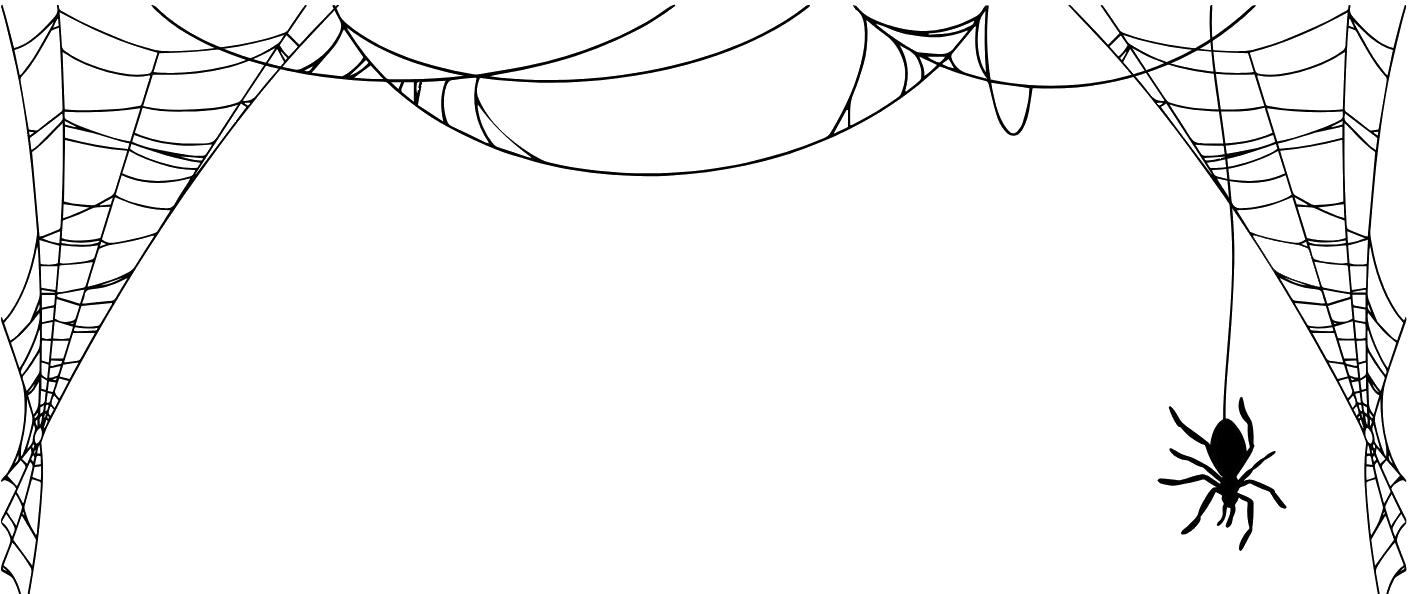




The full moon rises, a wolfman howls and below the flickering of a Wi-Fi indicator we are at work.
Despite the earlier unseasonable heat, All Hallow’s Eve still draws near, as you will see in the pages of this issue of the Collegian. While we don’t always find ourselves doing “themed” issues it seems that the whole staff has been stricken this year.
Perhaps we’re possessed? Though that seems unlikely, as an ancient spirit could not find their way around a Mac computer.
Infernal? Maybe, but idle hands are the devil’s plaything and there might not be a single idle pair in the whole newsroom.

Something from Frankenstein’s lab? Some presence animated as if by lightning? No, we’re simply motivated! By a love for horror, such as in the upcoming elec tions.
Enjoy our Halloween issue.
With love, integrity and unnerving fear,



The Collegian is the student newspaper of San Joaquin Delta College in Stockton, Calif. The paper is published six times a semester.
As a First Amendment newspaper we pride ourselves on a commitment to the students of Delta College while maintaining independence.
We reinvigorate the credo that the newspaper speaks for the students, checks abuses of power and stands vigilant in the protection of democracy and free speech.


The
ANDREA
CHRISTINA
Editor-in-Chief
DOMINICK DELISE Managing Editor/Feature
ZACKARY KIRK-NEWTON Managing Editor/Entertainment
SENIOR
JOHN NGUYEN JOSHUA SIMAS GURMAN SINGH

STAFF SIG AVALOS
BALTODANO KAITLYNN BRANDON ANTHONY ESPINOZA
GOERZEN
HALLINAN
CYNTHIA AGUILAR
MIKAELA CABANG
LAYLA CARRASCO
JESSICA CHHABRA
YUICHI DUMO
KYLE GOLDSMITH
ESTEBAN HERNANDEZ YANEZ STACY JENKINS
HIN
LORIANA JOSE
ELIJAH PROSSER
NADAR WILLIAMS JR.
SYMONE JOHNSON
SEIBEL MICHAEL SICARI-CUARESMA PRINCIA TINDELL MARCO VARGAS
Voters asked to help fund Delta’s future, but last bond didn’t accomplish all goals
BY JELISSA KING News Editor
Delta College’s $598 million Measure K is on the ballot in three counties: Alameda, Sacramento and San Joaquin — but the district isn’t the only district pursuing a bond measure this November.
A total of 252 districts across the state are asking voters to approve bonds. Four of those are in San Joaquin County: Escalon, Ripon, Tracy and Galt. Oakdale Joint Unified School District is also pursuing a bond in Stanislaus County.
If Measure K passes, tax-payers will pay “$16 per $100,000 assessed valuation, generating $34,800,000 annually,” according to bond documents.
Depending on where in the county a resident resides, property taxes could go up even more with “yes” votes on the other K-12 district measures.
While this the first attempt in 20 years, it isn’t the first time Delta has pursued a bond.
In March 2004, San Joaquin County tax-payers said yes to Delta’s Measure L. The bond was approved for $250 million. One of Delta’s goals was to become a multisite district, with plans to expand to a north county campus in Lodi and a south county campus in Mountain House.
Steve Mann, the mayor of Lodi from 1995 to 2000, has concerns about Measure K in light of failed promises.
“Lodi was promised a north campus,” said Mann. “It was a mess from the start. How do they expect Lodi taxpayers to support this bond measure, when promises were broken? I can speak for Lodi and say we were cheated.”
Delta still has high hopes for a north county campus. Superintendent/President Dr. Lisa Aguilera-Lawrenson said if Measure K passes, the promised Lodi campus and a Mountain House expansion are in the plans.
“The North and South
campuses are still top priority,” said Aguilera-Lawrenson. “We still want to expand those areas for those different demographics.
We have Mountain House which is at the border of Silicon Valley where technology is booming. Then there’s Lodi, where there’s agriculture, hospitality services, wineries; there’s so much Lodi offers. We want to expand Mountain House and make it a bigger campus to serve that population. And Lodi we want a big campus there too.”
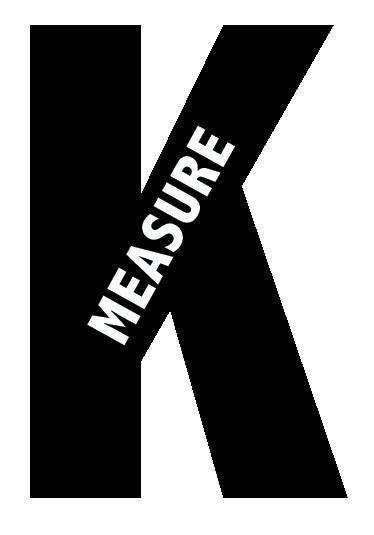
Citizens also have hopes. Stockton resident Terrance Wilkes said he supports “Yes on Measure K.”
“I don’t see what’s wrong with voting yes,” said Wilkes. “$49 a year ain’t that bad. Yeah, it adds up but it’s goin’ to a good cause. Education is important and Delta wants to expand for their students. So what, if they messed up some odd years ago? People ask for second chances all the time.”
Measure L wasn’t without its share of critique or criticism.
In 2006, a complaint led to an investigation by the San Joaquin County Civil Grand Jury over misuse of Measure L funds and violations of the Brown Act.
Delta was accused of violating the Brown Act by sharing closed-session discussions outside of the meetings and not uploading Citizens Oversight Committee (COC) agendas prior to meetings.
This grand jury report led to an California State Controller audit report on Nov. 18, 2008.
In the audit report, it was noted that Delta spent bond money outside of Measure L projects on high-tech marquees and institutional management software called Kuali. The report also found the COC as negligent by lack of reporting on project changes.
Measure L plans included the opening of South Campus at Mountain House. But what was supposed to launch as permanent buildings has been
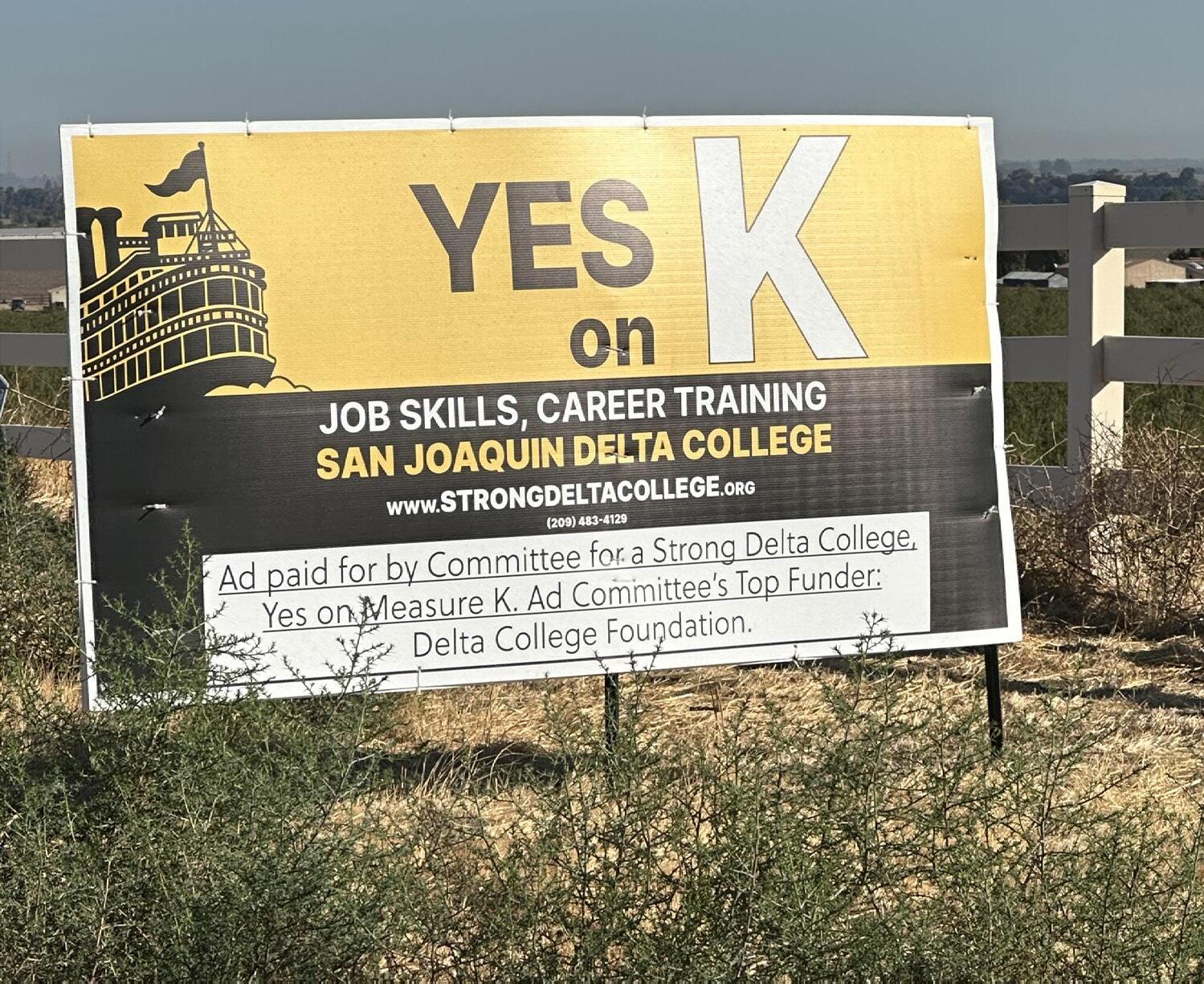
portable facilities since August 2009.
According to the 2007-08 grand jury report, the Mountain House campus was initially estimated to cost $55 million, but had ballooned to $98 million by January 2008.
“These figures do not include funds for Phase II and Phase III,” read the report. “At this time the plans call for portables (trailers) to be used to house students.”
The portables totaled $4.8 million. The entire campus was $30.4 million.
The Mountain House campus currently still consists of portable structures.
Mountain House resident and Delta student Sila Fatima attended the South campus in spring. Currently, she commutes to the Stockton campus, where she’s earning her associates degree in Speech Language Pathology Assistant.
“If my major prep classes were offered at MH campus, I would still attend it,” said Fatima. “Maybe prefer it over the Stockton campus to skip the commute. But my major courses are in Stockton, so that’s not an option for me… I would love for it (Mountain House) to become more of a traditional campus.”
Work also included upgrades to the Stockton campus, including the Science and Mathematics (SCMA) building. The building replaced the Cunningham Center, which opened in 1973.
“[The] Cunningham building cannot support modern science programs,” read the 2005-06 COC annual report. “Due to the presence of asbestos, the delivery of technology to the building has been minor and enough to meet current and future program needs.”
A groundbreaking ceremony for the Science and Math building happened on April 6, 2009.
In 2010, two construction companies were hired for the SCMA project, Kitchell Corporation and Taisei Construction Co. Kitchell was hired as construction managers and Taisei were the general contractors. The building was originally scheduled for completion in Fall 2013, according to the COC report from 2011-12. The following year’s report would delay the anticipated completion until January 2014.
During this time, Taisei filed suit against Delta, alleging breach of contract, fraud, lack of information in regards to changes of construction plans and lack of payment. Delta countersued Taisei, alleging breach of contract by delaying the project’s completion.
SCMA officially opened on Jan. 21, 2014.
A proposed north county campus was going to feature programs that focused on viticulture (wine-making), public safety, hospitality and culinary arts, according to the 2005-06 Citizens Oversight Committee annual report. Those plans have yet to come to fruition.
By the following year, Delta had spent $2 million on 140 acres of property on Liberty Road in Galt, according to the 2006-07 COC annual report. By the COC annual report from 2012-13, this project was officially named “North County Campus.”
In 2016, hydrology assessments and extensive site history were analyzed by the Chancellor’s Office (CCC), Board of Governors, FEMA and the U.S. Army Corps of Engineers. Tests concluded the property was in a flooding zone and home to an endangered species of shrimp.
Unable to build, Delta sold the property for $1.34 million in 2022.
Delta has worked to rebuild its presence in Lodi in recent years, with courses now being offered classes at the World of Wonders Science Museum in downtown Lodi.
The planetarium opened along with the Cunningham building in 1973. The planetarium was temporarily closed due to renovations when the SCMA project became a top priority, according to the 2007-08 COC annual report.
The focuses of the renovations were to comply with the Americans with Disabilities Act accessibility standards, new seating and an installation of the hightech projector called a “Sci-Dome.”
The planetarium was re-opened Oct. 10, 2009, and astronaut Jose Hernandez was part of the ribbon cutting. According to the annual reports, the planetarium was an “educational outreach tool for the community.”
However, the planetarium was demolished with Cunningham in 2015.
“The state has indicated a new planetarium for Delta will be a high priority under a new state facilities bond,” read the 201314 COC annual report. “The state would pay 80 percent of the cost, leaving Delta
OAKDALE JOINT UNIFIED SCHOOL DISTRICT, MEASURE G
Oakdale Joint Unified School District’s measure authorizing $10.5 million of bonds at legal interest rates be adopted, generating approximately $6,500,000 annually, average rates of approximately $58.16 per.
ESCALON UNIFIED SCHOOL DISTRICT, MEASURE L
Escalon Unified School District’s measure authorizing $27.7 million in bonds at legal rates be adopted, levying an average of $29 per $100,000 assessed valuation, raising approximately $2,300,000 annually.
RIPON UNIFIED SCHOOL DISTRICT, MEASURE J
Ripon Unified School District’s measure authorizing $32 million in bonds at legal rates be adopted, averaging $30 per $100,000 assessed valuation approximately $2,661,000 annually.
TRACY UNIFIED SCHOOL DISTRICT, MEASURE O
Tracy Unified School District School Facilities Improvement District’s measure authorizing $190 million in bonds at legal rates be adopted, levying $50 per $100,000 assessed value ($11,700,000 annually).
GALT JOINT UNION ELEMENTARY SCHOOL DISTRICT, BOND MEASURE H
Galt Joint Union Elementary School District’s measure authorizing $27 million in bonds at legal interest rates, levying 3¢ per $100 of assessed valuation, raising $1,960,000 annually.
with a cost of around $3 million. Currently, this project is on hold. Stay tuned!”
At a board meeting on July 18, 2017, the board was told the planetarium project wasn’t part of Measure L projects.
“Two currently authorized but relatively inactive projects — the North County Center (NCC) and the Planetarium Projects,” read the board agenda. “Are not anticipated to proceed in a timely manner to comply with this IRS rule.”
The planetarium had to be torn down due to state requirements, said Director of Facilities Planning and Management Stacy Pinola.
“The Planetarium was part of the Cunningham Building that was slated to be torn down as part of the matching funds from the Chancellor’s Office to build the new Science and Math Building,” said Pinola. “If we did not tear down the Cunningham Building we would have returned the funds to the Chancellor’s Office.”
A planetarium is mentioned in Measure K’s ballot language.
“It is a project of interest if the fund-
ing is available,” said Pinola.
Measure L funds were used for multiple building upgrades on campus.
The DeRicco Student Services building opened on Sept. 29, 2009, and was the first Measure L completed. At that time, student services like financial aid, counseling, career and transfer services were spread out on campus, mostly between Holt and Danner Hall.
The Phelps Police building, Goleman Library renovations, Shima Heavy Equipment expansion, District Data Center and Danner Hall renovations were all completed under Measure L, in addition to smaller projects and renovations on the main campus.
Measure L funds are also being used for the Physical Education/Recreation and Athletics (PERA) project — for the second time. The soccer field project was finished in 2007. By fall 2014, the field was reconstructed due to the wrong layers of grass, making it uneven. It was finished in 2016.
The baseball fields, football and track field were originally finished in spring 2009. By fall 2022, water damage caused performance issues and safety hazards for Mustang teams. The athletic fields are predicted to be completed next summer.
Since 2020, Delta has conducted community surveys regarding the potential bond measure. In order for a school district to get a bond measure on the ballot, the college needs 55 percent of the community to vote yes.
In June 2022, a board meeting covered a bond survey showed 55 percent numbers were “too soft” to appear on the ballot. The community survey was conducted in April of that year.
The goal was to plan for 2024 bond. According to the survey, “2024 offers longer planning timeline to continue external outreach and information, engage broader community.”
A bond survey was conducted between May 13-19, 2024. Six-in-ten voters had similar opposition statements. Concerns were generally regarding not wanting to pay higher taxes. However, there were two different groups of voters that had the same concern.
“Too many of the funds from this measure will be spent in remote areas of the district,” read the opposition statement from Stockton residents. “And won’t improve the main campus in Stockton where most students and classes are located. Our area has been waiting too long for
better local community college facilities, and this plan doesn’t do enough.”
Non-Stockton residents’ opposition statements had the same concerns but vice versa.
Survey results showed 60 percent of “initial votes” being in favor. That number increased 5 percent after voters received bond information. Once voters saw the tax amount, votes changed to 58 percent support. After seeing opposition statements the number decreased by 1 percent.
“Yes on Measure K” boards are posted throughout San Joaquin County. Facebook and Instagram pages were made on Sept. 17 called ‘Strong Delta College: Yes on Measure K.’ A website, strongdeltacollege.org, was also launched with information.
School districts can provide information about bonds being pursued, such as background history and proposed projects, but can’t promote or support them using district funds.
“We cannot directly advocate for it … We can’t use college resources, can’t do it on staff time,” said Alex Breitler, director of Marketing and Communications. “What we can do, on the clock, is give informational background to the community.”
The district spent $78,000 dollars on potential bond consultations with TeamCivx, according to purchase orders from July and August 2024.
“Now that we are in campaign mode, the Foundation has played a key role in funding all aspects of the Measure K campaign effort,” said Breitler.
In May 2024, the Delta Foundation had a meeting to discuss potential bond campaign and support funding. The foundation board members approved $200,000 contribution from unrestricted funds.
“The district has its own funds. Like the adopted budgets, they’re different from the foundation’s,” said Joseph Feneck, Executive Director of Delta College Foundation. “The foundation’s unrestricted funds are exactly what it means. Those funds don’t have any specific intent or restrictions or purpose in terms of how they can be used. ”
Measure K would help the college take care of needed facilities upgrades, but Delta is not putting all of its eggs in one basket with the bond.
“We have tremendous facilities needs and they’re quite urgent,” said Breitler. “I don’t want to get too far into speculation on what’s going to happen if it doesn’t pass. But we are mindful about the possibility and we’re making some plans.”

BY KAITLYNN BRANDON Staff Writer
On Oct. 17, the Associated Students of Delta College (ASDC) hosted Gaylloween, a spooky Pride event in the quad, which ended in a costume contest.
The quad was decked with pumpkin garland and spiderwebs, and event booths handed out Halloween treats and snacks. There was a haunted photo booth and pie eating contest in the early afternoon.
Annum Khan, a member of ASDC who coordinated the event described the success of Gaylloween.
“We ordered 200 sandwiches,” said Khan, who said the pie eating contest had at least 100 students watching.
ASDC aims to collaborate with programs across campus for the monthly College Hour events.
“ASDC’s number one goal this year is to have a collab with every program,” said Khan. “We wanted to include Pride center.”
Khan said the collaboration is ASDC’s way of getting the word out about Delta’s many clubs this year. College Hour occurs every third Thursday from 12 to 1:30 p.m. featuring a different club and a new event on the quad.
The largest event of the day was the last: The Costume Contest.
On an outdoor stage a line of costumes were introduced set to music relevant to each character.
“Shrek’s” Fiona, “Coraline” and several anime characters including crowd favorite Gojo from “Jujutsu Kaisen” participated. The contest winner was a duet act from “Monster High.”
Million Villanueva and Estella Carmona won first place in the contest. The couple, dating for almost three years, said the costume choice had both simple and complex messages.
“We really like ‘Monster High,’” said Carmona.
“We think the dolls are pretty.”
The winners said their costumes represent the importance of introducing empowering shows for the next generation.
“There’s more than just one kind of pretty,” said Villanueva, referencing the message she finds in Monster High.
Villanueva and Carmona are costume performers, who use costumery as a way to connect to others.
“We found a lot of cool friends,” said Carmona. First place prize was a voice activated Bluetooth speaker with a digital clock display which the winners said would replace their “Hello Kitty” alarm clock for its functionality.
BY LEVI GOERZEN Staff Writer
Fierce Mustang Media, KWDC.fm, The Collegian and the Digital Media program at Delta College hosted Dinner and Democracy, on Thursday, Oct. 17.
The event featured a media literacy panel and a meal there. A mayoral forum was planned to feature candidates Tom Patti and Christina Fugazi, however, both candidates canceled.
The media literacy panel featured Collegian Editor-in-Chief Andrea Rivera, freelance journalist Victoria Franco, Stocktonia Executive Editor Scott Linesburgh and Central Valley Journalism Collaborative Health Equity reporter Vivienne Aguilar.
The event was held thanks to grant funding from the James B. McClatchy Foundation’s All In For Democracy fund.
The panel was moderated by Hannah Workman, a reporter for The Record.
“Misinformation targets you,” Rivera said in response to a question.
When prompted about who misinformation commonly targets the panelists agreed that it targets anyone who will believe it, and once people are believing the misinformation then it becomes harder for news stories to spread truthful information.
“Democracy has always been work,” said Linesburgh.
A common theme throughout the panel was that social media has made it much harder to determine truthful information from falsehoods.
“It’s such misinformation that your vote doesn’t matter,” said Franco.
With how addicting social media has become it has also made it so that our younger generations need to be taught better. It has also become more work than it used to be to make sure that the information you are receiving is legitimate. Misinformation can spread like wildfire and is equally hard to put out.
“If you are in charge of the news you are a gatekeeper,” said Aguilar.
Ultimately the event succeeded in its goal of informing the public about media literacy and ways to be more media literate.
“This sort of event really brings to focus conversations that we need to have about media literacy,” said Tara Cuslidge-Staiano, a co-adviser for Fierce Mustang Media and adviser to The Collegian. “Not just in the Stockton community but you know nationwide specifically because there is a lot of misinformation out there.”
The event also served as a kickoff for a community media and information literacy campaign called Media Decoded.
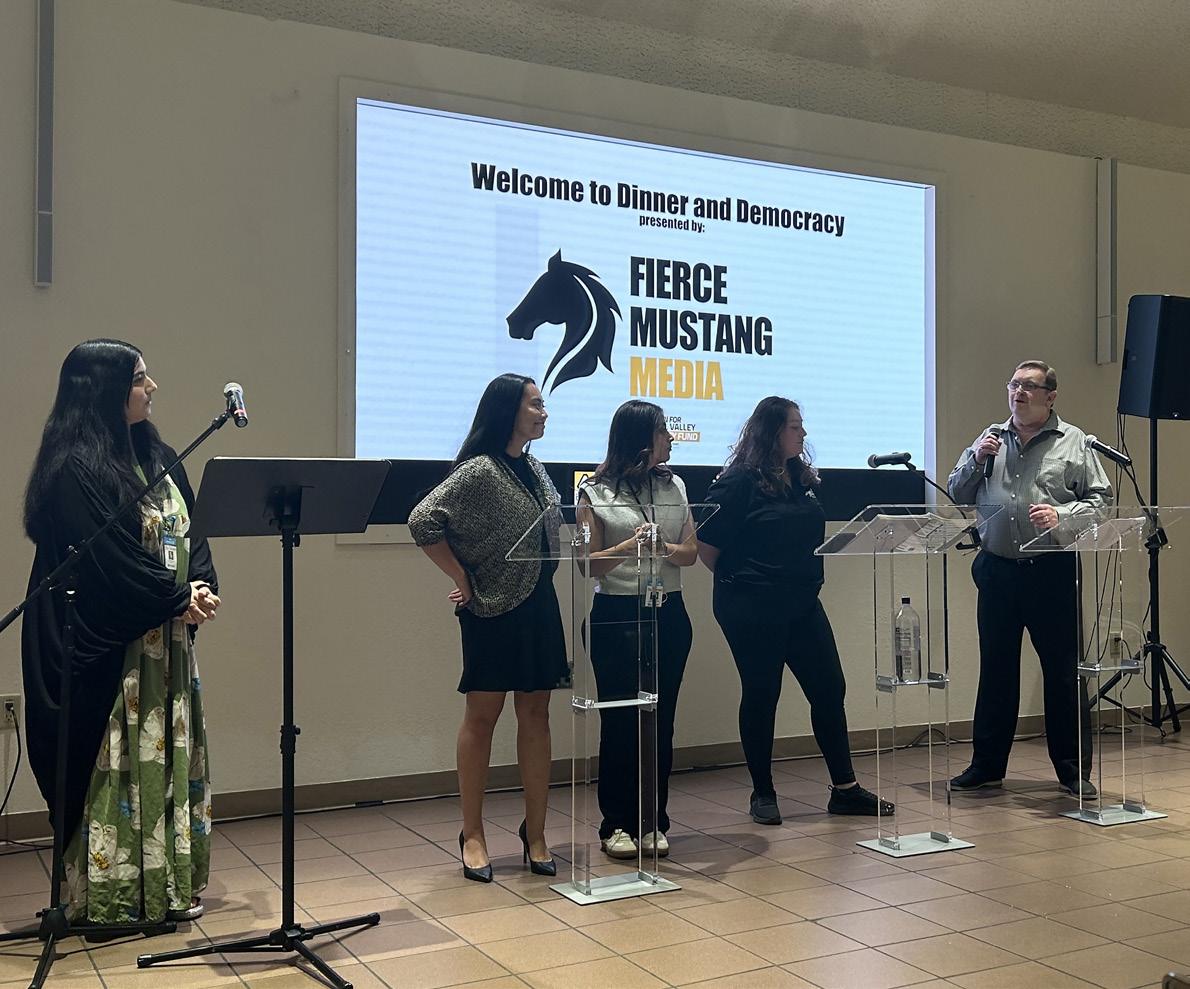
BY JOE DEMASI Sports Editor
Students who paid for parking fees meant to fund parking lot pothole repairs are confused about the enforcement of the parking pass policy.
The campus safety office is enforcing the matter and it is the first semester charging for parking since we reopened campus after the pandemic. In the beginning of the semester, the administration emphasized that you could only purchase the pass online and those who don’t have one are subject to fines. Seeing that students aren’t getting punished for having no pass causes students to not buy the pass until they see action.
Police Chief Robert Di Piero reassures that they are still charging for parking but the staffing shortages at the safety office contributes to them not ticketing people all the time.
“Parking enforcement is predominately handled by Campus Safety Officers and Student Service Officers in between their calls for service. The department has been dealing with staff shortages.” Di Pero said.
Joseph Delgado is the sergeant in charge of the parking programs, despite the confusion, according
to him the parking policy has remained the same.
“Since the college implemented fee-for-semester and daily parking permits (24/25 semester), we have seen a 90 percent success rate and an increase in revenue to support the rehabilitation of our parking lots,” Delgado said, “That said, we will continue our success with the program in the upcoming years and there has been no changes to the policy.”
However, students who come to campus need clarification about the whole parking policy in general.
Different machines aren’t working, pot holes still exist without any plan on when the funding would fix it, and some students think Delta could have handled this better.
Chief Di Piero confirms that some machines aren’t working but doesn’t specify the exact location. “We are aware that some machines are down. When the machines go down our staff try and repair them if we are unsuccessful, we have to contact our repair service. Students do have the option of buying a paperless daily permit online,” he said.
Second-year student Logan Crabb disagrees with the fees and said he hasn’t purchased a parking pass yet.
“I haven’t purchased one. I know people around campus who don’t have one and I don’t plan to get one until I see someone getting a ticket for not having one. I see cars all over the lot with no pass and they haven’t even started repairing the pot holes. The whole situation is a mess,” Crabb said. “Instead of charging students for parking, the administration should focus on upgrading campus first.”
He alluded to the constant internet problems and the mistreatment for disabled students trying to use different things around campus like elevators and ramps.
Crabb isn’t the only student who is criticizing how Delta is enforcing the parking fee. Haley Ochoa bought a parking pass at the beginning of the year and thinks the rules set in place should be enforced
“I come to school Mondays, Wednesdays, and Thursdays. I’ve seen people with no passes and they don't have any consequences which makes me feel like I wasted $30…. it makes no sense why they don’t ticket people. I think it has to be a lack of resources on their end, maybe they don't have enough officers to enforce the rule,” Ochoa said.
BY KIEMA GARRETT Senior Staff Writer
Returning to campus after a few years of online learning has brought unexpected challenges for Delta’s students. Despite administrative efforts to balance online, hybrid, and in-person classes, the concentration of students on Tuesdays and Thursdays has stretched resources and left many students with fewer practical options for attending in-person classes on other days.
Computer science major J’son Brady described his experience with the scheduling dilemma.
"A lot of the classes I needed were Tuesday, Thursday classes and were conflicting,” said Brady. “I had to choose between my options and push the others out until next semester."
To make matters worse, he noted that classes fill up quickly due to the limited scheduling options. "If you're not fast enough, you could easily miss out on the class you need, and it’s getting harder to find alternatives."
He added that if this pattern continues, it could end up delaying his projected graduation date.
Director of Marketing and Communications, Alex Breitler, shared that 25
percent of courses this fall are scheduled on Tuesdays and Thursdays, while 20 percent are held on Mondays and Wednesdays, and another 6 percent Monday/Wednesday/Friday. The remaining 49 percent are online or hybrid courses.
For comparison, he further explains that in 2019, around 30 percent of classes were Tuesday/Thursday, 20 percent were Monday/Wednesday, and 11 percent were Monday/Wednesday/Friday, with 39 percent of courses being online or hybrid.
This shift is reflected in the number of courses offered: in Fall 2019, there were 599 classes scheduled for T/Th, 406 for M/W, and 220 for MWF. By Fall 2024, those numbers dropped significantly, with only 302 T/Th classes, 247 M/W classes, and 79 MWF classes.
Regarding in-person class offerings between 2019 and 2024, Breitler noted that while the overall number of in-person classes has decreased due to the significant shift toward online learning, the distribution of class schedules has remained relatively consistent.
“There has not been a major change in the ratio of M/W, T/Th, or MWF classes. We do have somewhat more T/ Th classes than M/W classes, but that
was the case even before COVID, and the ratio hasn't changed all that much,” said Breitler.
While these reports suggest minimal changes, students and staff have noticed busier conditions on Tuesdays and Thursdays compared to M/W or MWF schedules. The high concentration of students on these days has led to greater utilization of campus resources, such as the food pantry, which sees a spike in demand.
In fact, the presence of more students on Tuesdays and Thursdays seems to be straining these campus resources.
"We’ve been serving 600 students each week, with around 300 coming in on Tuesdays alone," said Valerie Valera, student program assistant with the food pantry, in a recent Collegian article.
Despite their efforts to help fight food insecurities and inflation, signs posted on the pantry windows indicate ongoing food demand challenges. This underscores the struggle to keep up with the influx of students on Tuesdays contributing to these resource limitations.
Transitioning from the challenges faced by the college pantry, the impact of these scheduling decisions is also highlighted by alumni experiences.
Breanne Martinez, a recent Delta graduate and mother who attended preand post-COVID, reflects this impact.
"MWF worked better because I have kids. I went to school during their school time... Night classes were also easier because people were more inclined to watch my kids," Martinez explained. “The point I’m making is the return of a more flexible schedule could best benefit the parent-student lifestyle.”
Breitler acknowledged these concerns, stating, "we want to do better at offering schedules that work for students — many of whom, as you pointed out, are working or raising young children and may not find our schedules to be convenient.”
He explained that the college is implementing a Strategic Enrollment Plan to improve scheduling, technology, and support services.
“That plan involves looking at the technology tools that we have, our enrollment goals, our marketing and outreach efforts, the programs that we offer, social justice and equity, and many other pieces of the puzzle to determine how we can lead to better outcomes for students,” said Breitler.
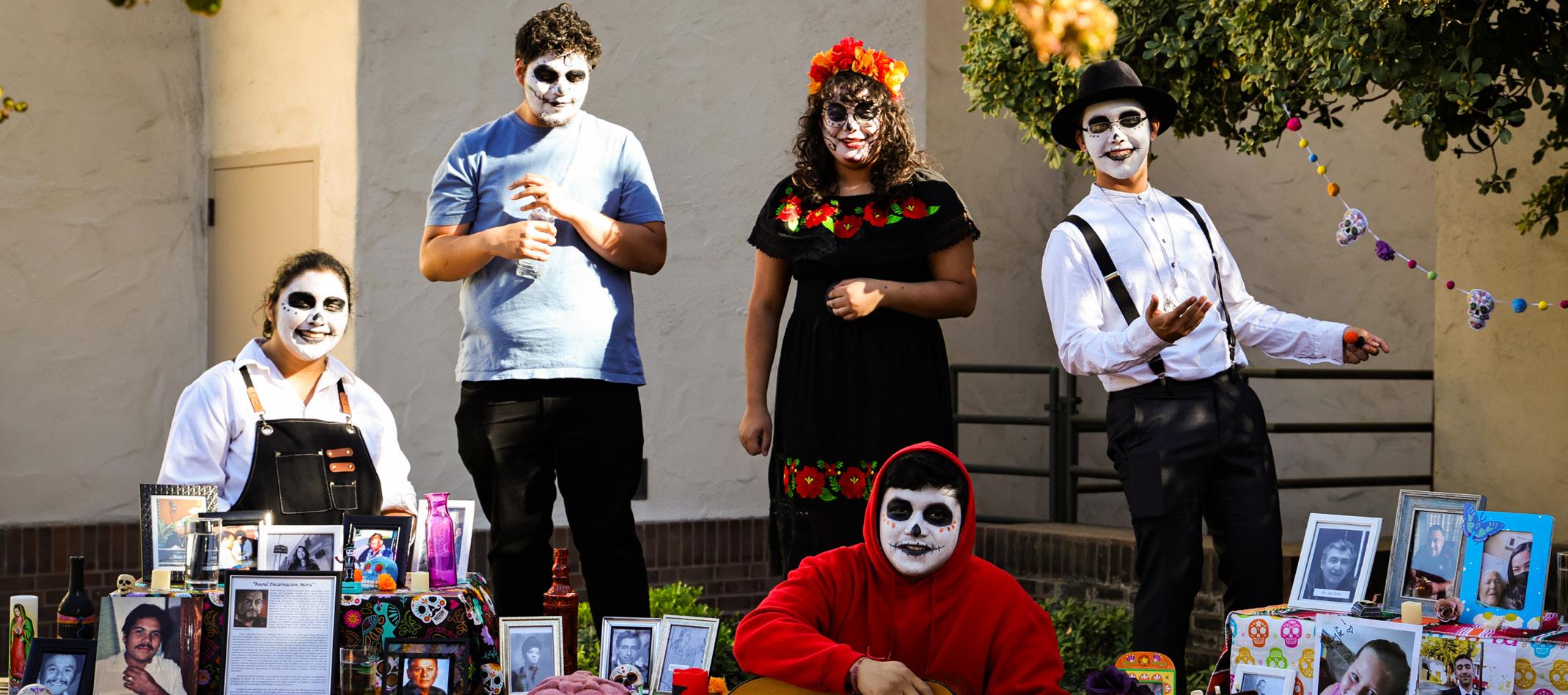
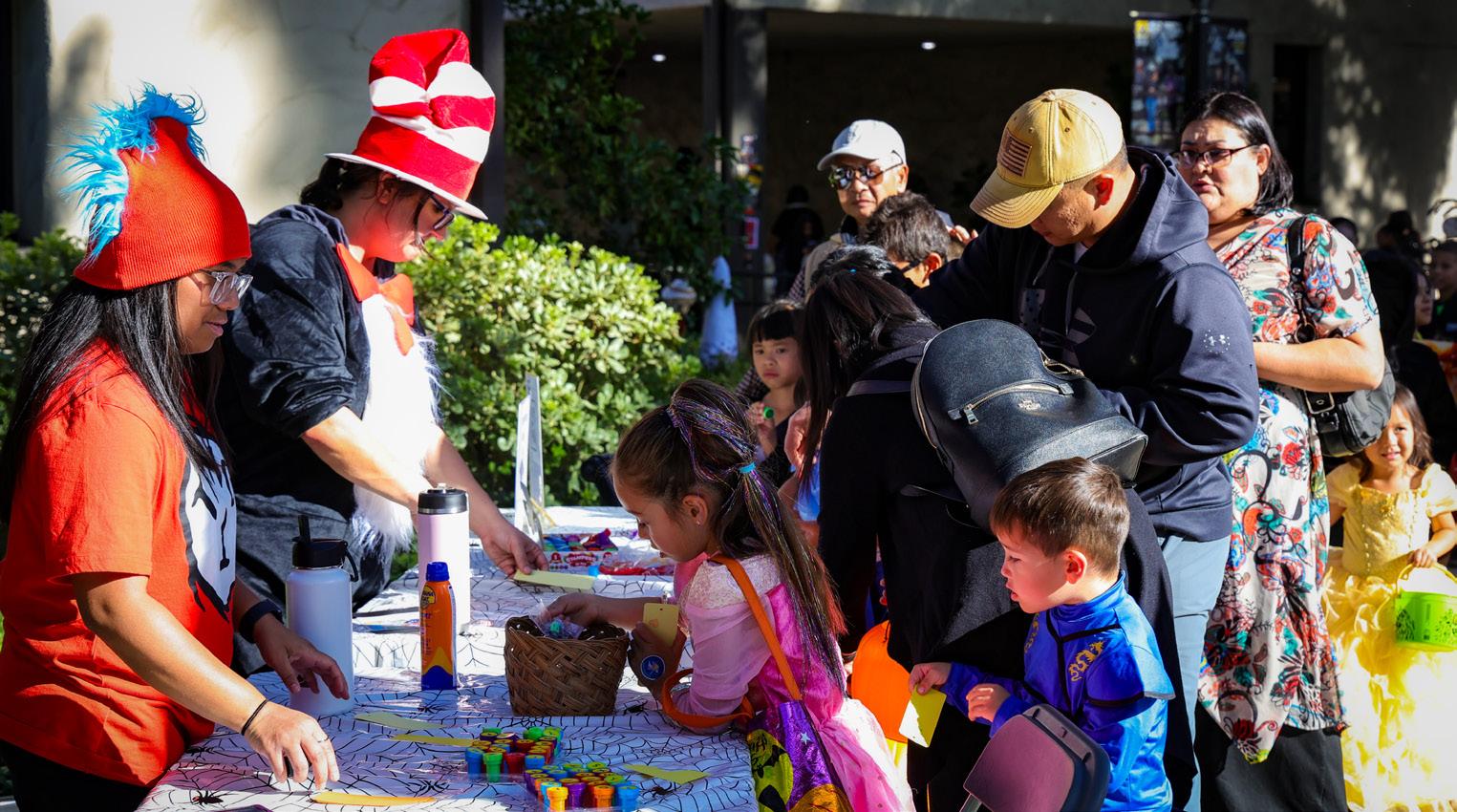
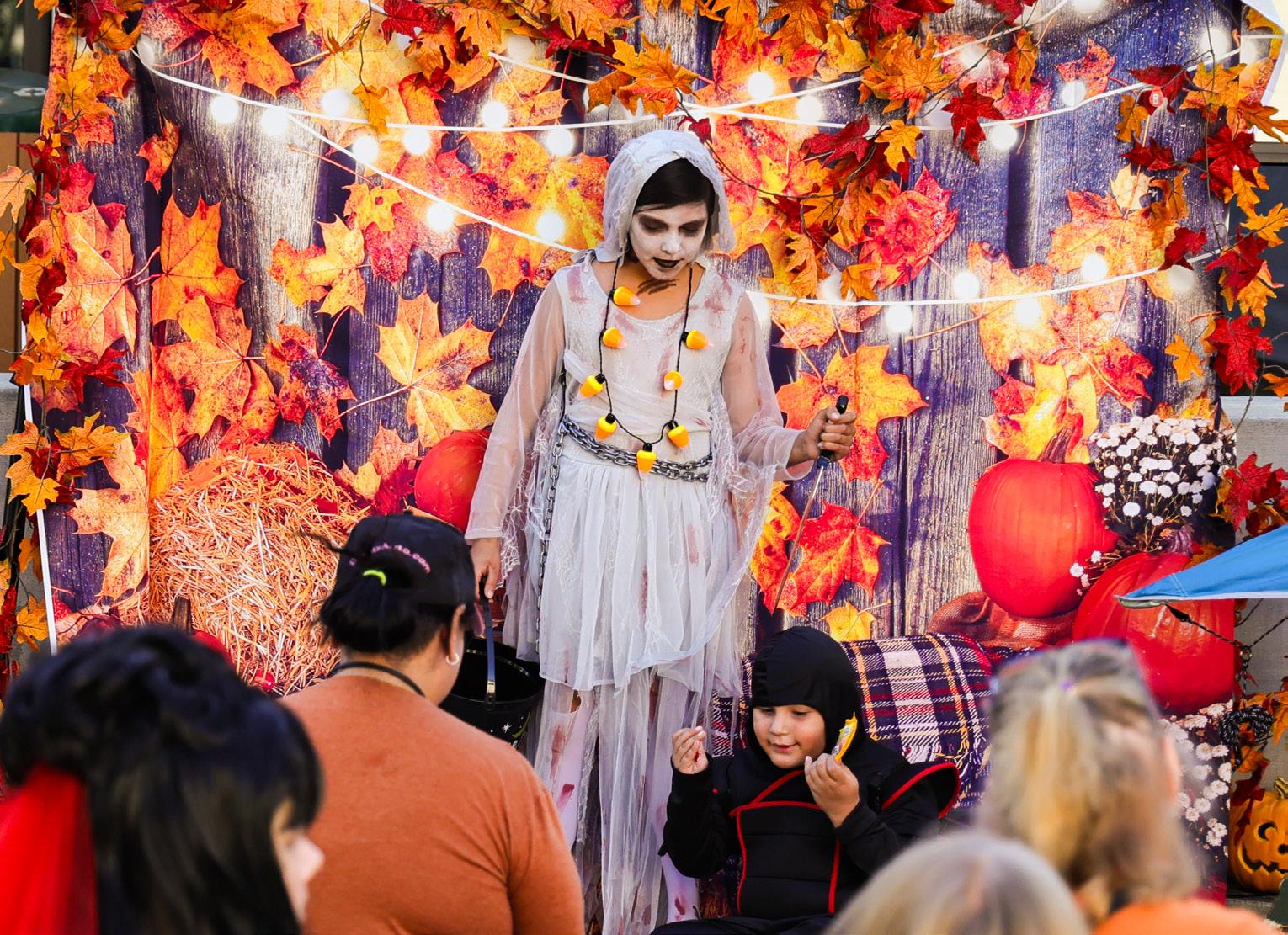
Top: The booth for Puente Club where they’re celebrating Dia de los Muertos.
Left: Golemen Libray’s booth had two students dressed like Cat in the Hat characters giving kids stamps and toys.
Bottom left: A campus visitor during Fierce’s Fall Fest in CTE-Land.
PHOTOS BY JOSEPH “BONESINTHEBOOTH” PETHOUD
Bottom Right #1 : Fierce, Delta’s mascot takes pictures with kids during the festival.
Bottom Right #2: Kids enjoy cotsumed toy story characters.
PHOTOS BY STACY JENKINS
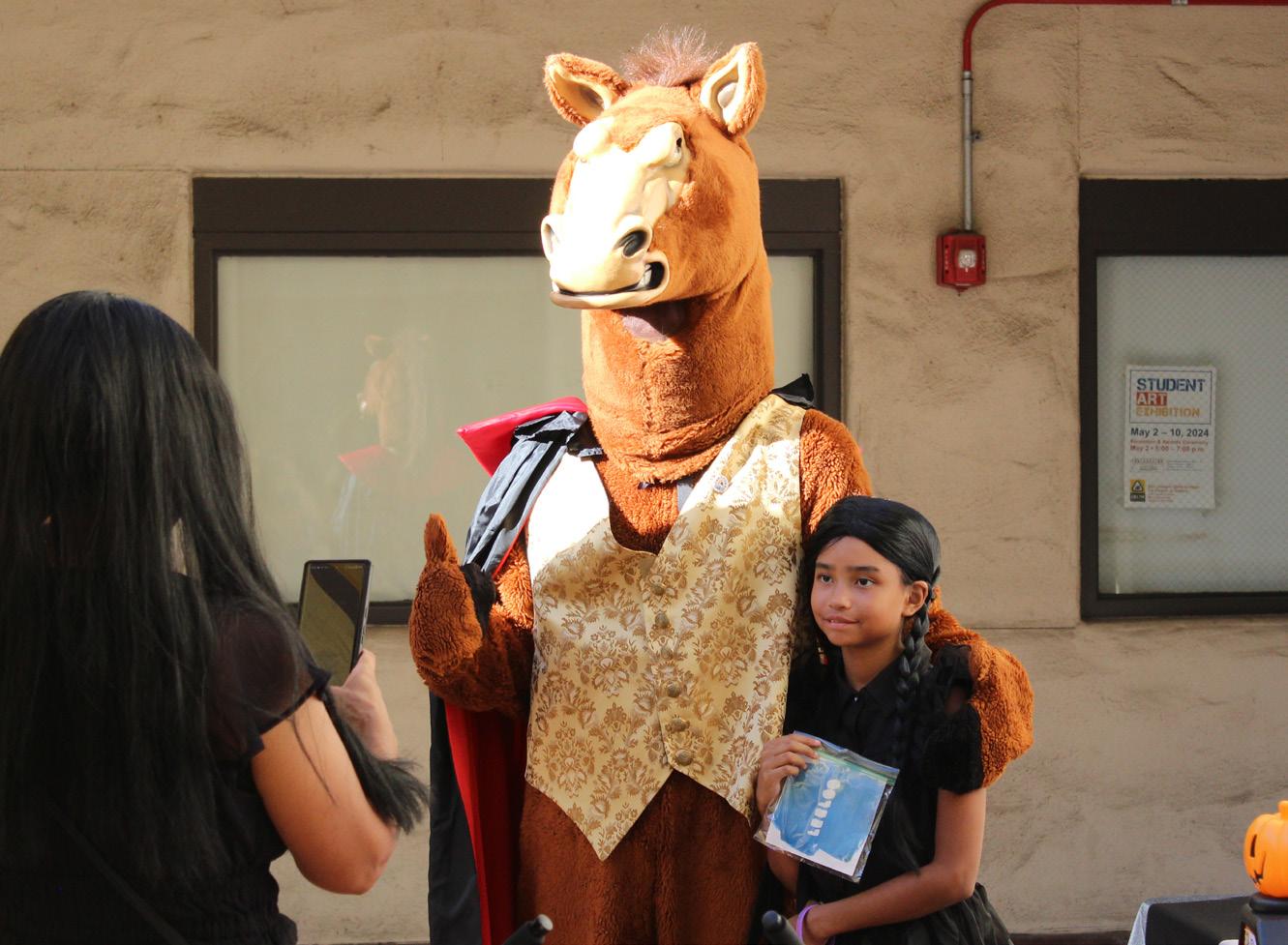

BY KIEMA GARRETT Staff Writer
College life can be scary—especially when it comes to managing a tight budget. But here’s a trick (or treat) to make things easier: flash your student ID, verify your status online, and watch your expenses drop.
From fresh outfits to must-have tech and even late-night pizza, being a student comes with plenty of perks. However, these deals won’t last forever, and many will disappear after graduation.
Speech Pathology major, Star Cortes shared her thoughts on student discounts, saying they enhance
the shopping experience. “Who doesn’t love a good discount?” she added.
To help students like Cortes save even more, we’ve put together a student discount guide covering everything from fashion to travel, electronics, entertainment, food, and more!
Before diving into the discounts, it’s important to know how to access them. While many discounts are available directly through brand websites, most require verification through platforms like ID.me, UNiDAYS, or Student Beans, which confirms your student status in exchange for exclusive deals. Here’s a quick guide.
• ID.me: A digital identity network that verifies student status for various retailers and brands. You can sign up at id.me and access discounts for clothing, tech, travel, and more.
• UNiDAYS: A free service offering student discounts at hundreds of stores and fashion brands. Sign up atmyunidays.com, verify your student status, and start saving.
• Student Beans: Student Beans verifies student status and provides discounts on a wide range of products. Visit www.studentbeans.com to access deals from popular retailers.
• nike.com: Eligible students in the U.S. get 10 percent off most items when they verify through SheerID.
• crocs.com: Save 25 percent on full-priced styles online by verifying through ID.me.
• Forever21.com: Score an extra 21 percent off by verifying with UNiDAYS.
• hm.com: Students get 10 percent off H&M by joining StudentBeans or SPC (online only).
• converse.com: Students can get 15 percent off online by verifying status at checkout (some exclusions apply).
• target.com: Join Target Circle 360 for $4.99/month with student verification
• hulu.com/student: Students can enjoy Hulu for $1.99/month, a 75 percent discount off the regular price.
• universalstudioshollywood.com: Get Halloween Horror Nights tickets for $67 at Universal Studios Hollywood by verifying student status on Student Beans. (Expires Nov 3rd).
• spotify.com: Students get 1 month free, then pay $2.99/month. Or Spotify Premium and Hulu (With Ads) free for 1 month, then $5.99/ month after.
• peacock.com: $1.99/month for 12 months (regularly $7.99) after verifying status via SheerID.
• doordash.com: Students can sign up for DashPass for $4.99/ month or $48 annually (normally $9.99/month or $96/year).
• costco.com: Receive a $20 Digital Shop Card by joining as a new Gold Star Member and signing up with www.myunidays.com.
• uberone.com: Try Uber One Student free for four weeks, then $4.99/month. Get $0 delivery fees, up to 10 percent off other deliveries, 6 percent back on rides, and exclusive discounts from top brands and eats.
• statefarm.com: Students can get up to 25 percent off auto insurance by maintaining good grades, with savings available until age 25.
• zgw209.com (Zen Garden Wellness): A local recreational dispensary offers 10 percent off to students (with proof).
• bose.com: Save $30 on orders $199+ by verifying through ID.me
• budgettruck.com: Get 20 percent off local moves and 15 percent off one-way moves with discount code TRUKU.
• amtrak.com: Students aged 17-24 can save 15 percent on bookings made one day in advance. The discount applies automatically or by using code V814 in the Amtrak app.
• superiorthrift.com: offers teachers and students 30 percent off every Thursday with proof. Visit 1135 N Wilson Way, Stockton, 95205.
BY ASHLEY HALLINAN Staff Writer
At the root of all things agriculture are the traits of sustainability, resilience, patience and community to ensure success and growth.
Mustang Acres is the perfect example of the culmination of these traits through the foresight and guidance of Professor of Horticulture and Plant Science Tina Candelo-Mize.
Mustang Acres is a student-run farm on Delta’s Stockton campus that operates in conjunction with the Manteca farm.
New additions to the agriculture department are recently hired new faculty members, Lindsay Hofsteen, who teaches plant science and viticulture, and Kate Gaede who teaches ag business.
“We had a fairly successful tomato sale a couple of times and also sold tomatoes to culinary and the first two student chefs had produce from Mustang Acres,” Candelo-Mize said of recent Mustang Acres projects. “The sunflowers have run their course; we just harvested pumpkins. We sold some (pumpkins) at our last nursery sale which we have every second and fourth Friday of the month.”
Mustang Acres will be getting a new gate the welding students will be making after an unidentified driver crashed a car through the fence into the compost pile in the middle of the night several weeks ago.
This summer was the first peach harvest with just six peaches, but it’s a good sign meaning more bountiful harvests are ahead within the next year or two. Plums, apricots and cherries are expected to follow shortly after for fruit production harvests.
In two years, Mustang Acres will go from light to full harvests of the fruit trees as

they come into full maturity. One goal is to be able to have U-Pick events once fruit trees are producing more heavily.
Looking to the future with projects with Mustang Acres, there are plans for increasing the number of vegetable starts that are grown at Delta in order to dial in production to be able to supply the Culinary Arts students and produce at the nursery sales. There’s also a conversation with Delta food pantry in the works.
Candelo-Mize is exploring grant opportunities and currently applying for a NIFA (National Institute of Food and Agriculture) Grant in order to support staffing.
Students in agriculture classes aid the production of Mustang Acres, but additional staffing is needed to continue the operation throughout the year, especially during times when classes are not in session.
The hope is to supplement what is grown at Mustang Acres at Delta’s campus with what is grown at the Manteca farm on a larger scale.
“The vision for the farm is that it’s going to be essentially like a taste of San Joaquin,” said Candelo-Mize.
The permanent crops like trees and alfalfa that stay in the ground year after year will grow at the Manteca Farm. That would include olive trees for olive oil,
BY ASHLEY HALLINAN Staff Writer
Plants, gardening and landscaping are at the heart
Horticulture Club.
Horticulture Club president and agriculture intern, Ajani Young shared a new highlight for this semester. The club is hosting California Native Plant Walks partnering with ethnic studies professor, Nia Gregory.

and almonds.
Mustang Acres will have seasonal produce items available at the next nursery sale, which are held on the second and fourth Fridays of the month. The next sale is today, Friday, Oct. 25 and will run from 10 a.m. to 4 p.m. Sales will start back up in the spring semester.
“She’s (Gregory) going to be going on the walk with us and then we will trade off information about what we know about the California native plants,” said Young.
On the walks, Horticulture club members share information they’ve learned about the botanical side and Gregory will share information about traditional uses such as medicinal purposes, in practice, and special instructions from local tribe chapters on special ways to manage the plant.
The partnership strives to share education on proper
care and management of the plants to best preserve and protect them. The club will be printing signs with both the botanical name and the native name to put near the plants to further share the information beyond the walks.
Plant walks are every fourth Tuesday of the month on campus starting at the near the greenhouse.
Other recent activities for the Horticulture Club was the cleaning up of ficus trees that were used in the club’s spooky forest at their club booth during Fierce’s Fall Fest.
Horticulture Club will be participating at the upcoming Associated Students of Delta College club market happening November 6 & 7 from 11 a.m. to 1 p.m. where clubs can sell food or other items to help fundraise.
If you’re interested in learning more or participating, Horticulture Club meetings are Tuesdays from 12:30 p.m. to 1:30 p.m. at the Horticulture Center.
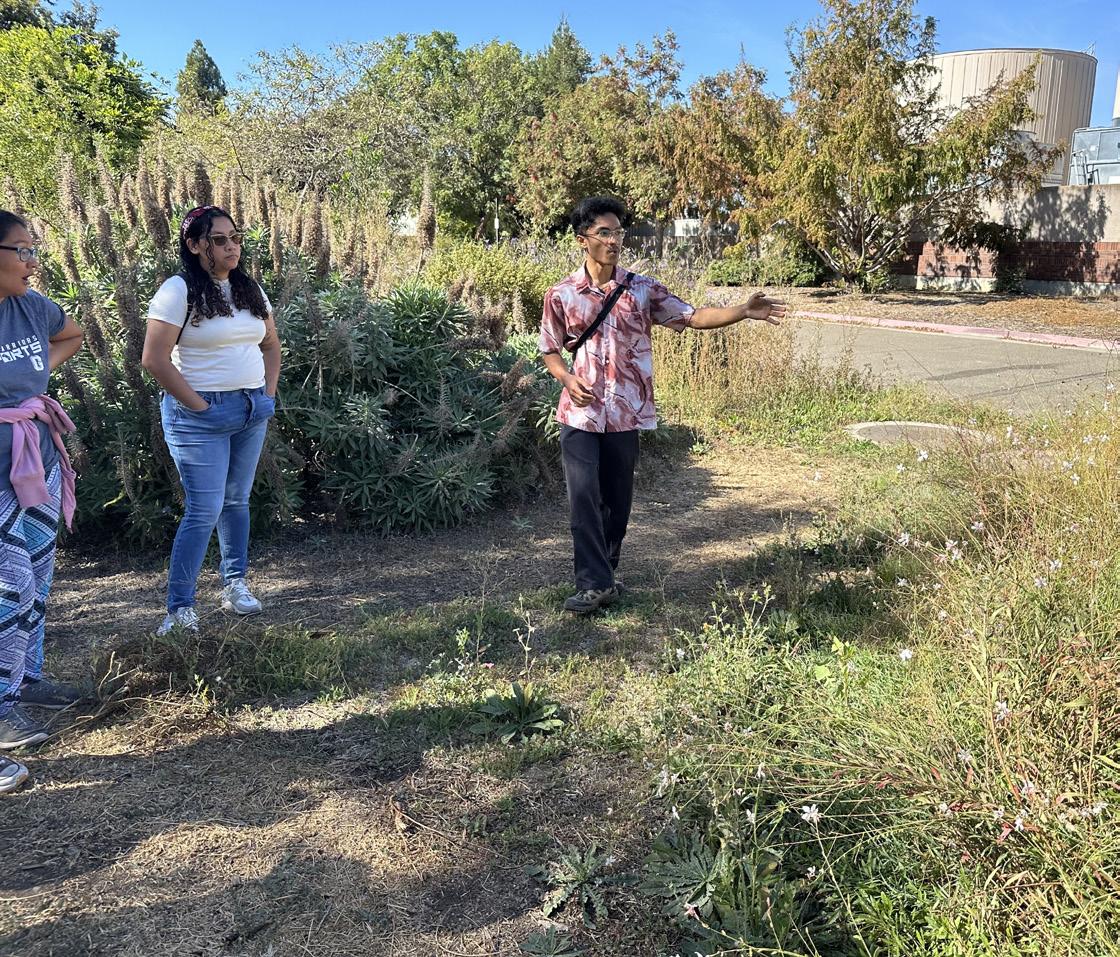
BY DOMINICK DELISE Managing Editor
Delta College has recently introduced the African American Male Education Network & Development (A2MEND) mentorship program exclusive to African American men to help them achieve their academic goals and improve their enrollment at Delta.
“What got the program started is that we had a Memorandum of Understanding (MOU) last year it comprised of me and four other of my colleagues to come up with a plan to increase the retention rate of African Americans,” said Counselor and Advisor of Delta’s A2MEND Johnathan Harris.
The enrollment of African American men at Delta is 5.5 percent, and the opportunities A2MEND can provide will look to increase the number of African American men attending Delta.
“Delta severely needs a program like this, especially being in Stockton,” said Harris.
The goal of the mentorship program is to provide opportunities and a sense of belonging and include
more access to faculty and counseling services.
“When a student feels more connected, they’re going to be more successful,” said Harris.
A2MEND is state-funded and with the funding available to them students can look forward to scholarship opportunities, networking, and training, as well as workshops and university tours. Harris mentioned a trip to Africa as well.
“The fundings not a lot … I think it depends on how many students are involved. The minimum is supposed to be $10 (thousand),” said Harris.
According to Harris, there have been about 20 students attending each meeting, and they are working in conjunction with Delta’s Black Student Union (BSU) and Black Excellence and Enrichment Academy (B.E.E).
“We partnered with BSU and Lauryn [Seales], on this last trip. We had a couple of BSU members go as well, so it’s not mutually exclusive…even though A2MEND is strictly African American males, some of our males are from BSU and B.E.E,” said Harris.
Although the program is in its early stages, the
program has already hit the ground running with two meetings, another coming on Oct. 22 and one field trip at Sacramento City College’s “Rock the Schools Bells” annual Hip Hop conference on Oct. 18.
Harris had five years of experience working with the A2MEND at Cosumnes River College (CRC) where he worked alongside CRC President and A2MEND Co-founder Dr. Edward Bush. Harris attributes this to giving the program a great head start in integrating into Delta.
“Being that I was already connected — I don’t want to say it was an easy process, but it definitely helped that I was already connected,” said Harris.
To be an official club on campus, Harris mentioned that they had to appoint a Student President, Vice President, and Treasurer.
While they have an idea of who will fill those roles, Harris was unable to provide the names of those students as nothing is set in stone yet.
The meetings are hosted every other Tuesday in the DeRicco room 275 from 12 to 1 p.m.
BY CHRISTINA GOODMAN Editor-in-Chief
The American Cancer Society, with the pharmaceutical division of Imperial Chemical Industries, established October as Breast Cancer Awareness Month in 1985.
“Breast cancer awareness month is an annual international health campaign organized by major breast cancer charities every October to increase awareness of the disease and to raise funds for research into its cause, prevention, diagnosis, treatment and cure,” according to Sullair
With being a woman it’s a lot you have to do to maintain yourself and your health, such as having supplies for your period, going to your OB/ GYN. The list goes on
When you get to a certain age you have to get a mammogram to make sure that you don’t have breast cancer.
When is the appropriate time to get a mammogram? Am I too young for breast exams?
“The U.S. Preventive Services Task Force recommends starting screening at age 50 for women at average risk while the American Cancer Society recommends begin-
ning mammograms at age 45,” says Celette Skinner, Ph.D., chair of the Department of Population and Data Sciences at UT Southwestern Medical Center.
I’ve been doing self-examination for years and next year when I turn 40, I’m going to go get a mammogram.
I feel like that’s a good age for me to get checked and I know cancer runs in my family so I have to look out for “my girls”.
Why is it important to get mammograms or self-examinations? It can help make sure that you don’t have breast cancer. Detecting anything that is off early can save your life and also your breast.
But with mammograms it’s a chance that it can be completely accurate or not.
As stated by the CDC “Some risks from mammograms include false results and exposure to a small dose of ionizing radiation during the procedure.”
CDC continues to say that “A false-positive test, one that indicates you may have cancer when you truly do not, may lead to extra expenses, testing, and stress.
According to The Cleveland
Clinic these are the steps needed for self-breast exams
• Stand in front of a mirror, you can lie down on your back or in the shower.
• Use your index and middle finger to firmly feel around to see if you feel any lumps.
• Also feel around under your armpit
• Squeeze your nipple to see if you have any type of discharge
• Look for changes in the skin on your breasts.
Collegian staff recommends spooky tunes to close out Halloween month with
BY ANDREA RIVERA Editor-in-Chief
The Collegian’s spooktacular playlist for all the ghouls and goblins around. A list made up for nostalgia, suspense and adventure; you’ll be screaming with fear, or cheer till dawn. Warning some songs are explicit and may not be suitable for all audiences.
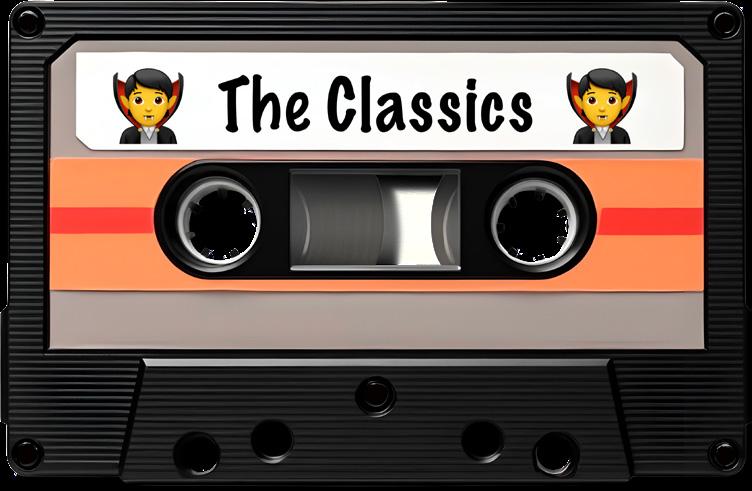
• “Monster Mash” by Bobby “Boris” Picket
• “Thriller” by Michael Jackson
• “Somebody’s Watching Me” by Rockwell
• “Time Warp” by Nell Campbell
• “Ghostbusters” by Ray Parker Jr.
• “Spooky Scary Skeletons” by Andrew Gold
• “On Halloween Night” by Brotha Lynch Hung
• “Monster” by Kanye West Featuring Nicki Minaj, Rick Ross, Jay-Z and Bon Iver
• “Dr. Frankenstein” by Ice Cube
• “Scary” by Megan Thee Stallion
• “Uneven Compromise” by Lil Ugly Mane
• “Nightmare” by Metro Boomin and Offset

• “Psycho Killer” by Talking Heads

• “The Nightmare Before Christmas” by Danny Elfman
• “Hocus Pocus” and “Hocus Pocus 2” by John Debney
• “Us” by Michael Abels
• “Halloween” by John Carpenter
• “The Phantom of the Opera” Overture by Andrew Lloyd Webber
• “The Texas Chainsaw Massacre” by Tobe Hopper and Wayne Bell
• “I’m in Love with a Monster” by Fifth Harmony
• “Calling all the Monsters” by China Anne McClain
• “13 Nights of Halloween” by Elvira
• “Disturbia” by Rihanna
• “Season of the Witch” by Lana Del Rey
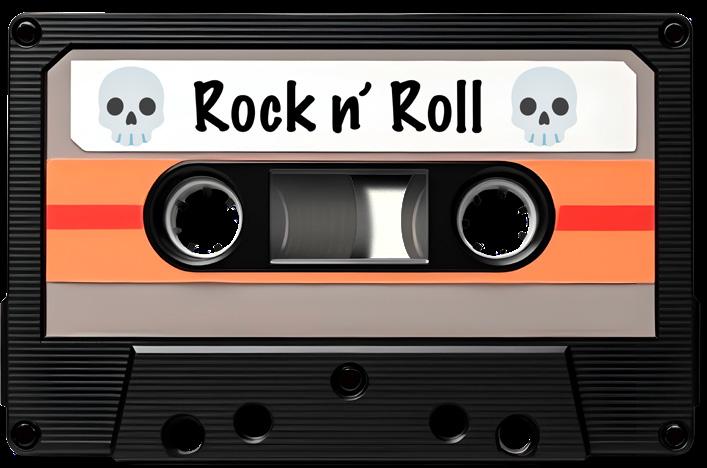
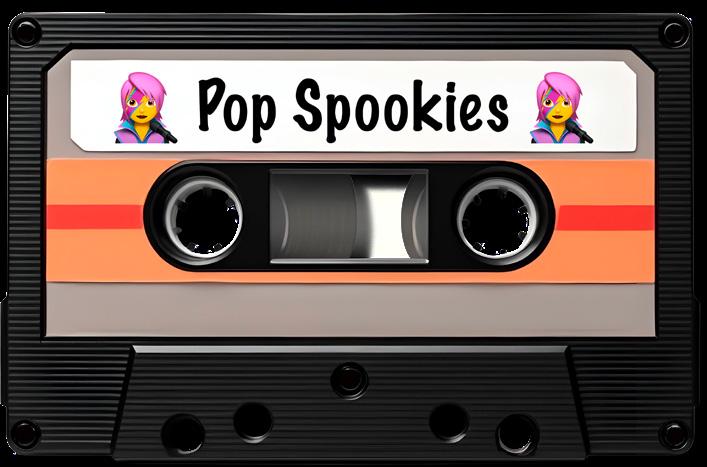
• “(Don’t Fear) The Reaper” by Blue Oyster Cult
• “Zombie” by The Cranberries
• “Pet Semetary” by The Ramones
• “Children of the Grave” by Black Sabbath
• “Know Your Enemy” by Green Day
• “I Walked With A Zombie” by Rocky Erickson
BY KIEMA GARRETT Senior Staff Writer
What’s more chilling than the words “based on true events?”
This spooky season, horror enthusiasts can plunge into a terrifying selection of films, from gruesome slasher flicks to spine-chilling supernatural tales. But beware: the most hair-raising narratives aren’t conjured from the imagination — they’re grounded in the chilling realities of true crime.
What is it about movies based on real events that sends shivers down our spines?
Delta Campus Police Officer Vincent Barron, offers a unique perspective on the genre. While he doesn’t find enjoyment in horror or true crime — having enough of it in real life — he acknowledges that realism is crucial for a good horror film.
“Our morbid curiosity, or our interest in fear stems from adrenaline and excitement,” said Barron.
He draws parallels between horror and thrill-seeking experiences like skydiving and roller coasters, noting that both have elements of fear that drive excitement.
Barron cites the psychological thriller “Final Destination” as a film that embodies his viewpoint. “The fates that play out in ‘Final Destination’ are freak accidents that can occur any day. Actually, I have responded to some really
BY ANDREA BALTODANO Staff Writer
Costume enthusiasts are organizing their outfits for the scariest night of the year as Halloween approaches. Whether it’s for trick-or-treating, a party at a friend’s house or just an Instagram carousel, picking the perfect costume might be the most important part of the holiday.
The top picks of this year combine pop culture, nostalgia and some creativity.
BEETLEJUICE, BEETLEJUICE
Perhaps the most prominent trend this 2024. The 1988 cult classic made a comeback with the sequel released on Sept. 6. Besides the white and black striped suit, Dolores has taken the spotlight with her red lips and stapled face. Lydia is also channeled with her
graphic scenes on the job — scalp-peelings, automobile accidents, etc.,” he shares, highlighting how the film’s premise resonates with real-life experiences.
Professor of Drama Greg Foro agrees that what makes a film a great horror film, lies in its realism.
“If it is realistic in any capacity, it gives more of a punch to the viewer,” he explains. He adds that when audiences feel a connection to the story — believing it could happen in their world — the impact is heightened.
The appeal of horror films based on true events is not just about the jump scares; it’s also about the chilling connection to reality. Films like “The Conjuring” and “The Amityville Horror,” weave in supernatural elements that feel all too real, but thanks to their foundations in actual events.
Speech pathology major Star Cortes shared that “The Conjuring” is her favorite horror movie, highlighting its unique portrayal of the spirit in the film.
“Instead of depicting the spirit as purely evil, the director/filmmaker presented a deeper backstory,” she said.
This nuanced storytelling seems to be the hallmark of many horror films based on true events, as they often delve into the complexities behind the terror.
Delta student and a founder of the Philosophy club, Jacob Perry adds another layer to this discussion: “Horror films are a safe way to explore fear. They
let us confront emotions that might otherwise be overwhelming,” he said.
In films like “The Texas Chainsaw Massacre,” audiences are introduced to Leatherface, a character inspired by the infamous ‘Butcher of Plainfield,’ Edward “Ed” Theodore Gein, a notorious murderer and body snatcher in the 1950s, who according to murderpedia.org, murdered two women and exhumed around 40 corpses from local gravesites in Plainfield, Wis., keeping their bones, body parts, and skin as prized possessions.
Parallel to Gein’s real-life atrocities, the film’s Leatherface character crafts masks out of human skin, echoing Gein’s real life practice of creating items like masks, lampshades, and even clothing from the skin of his victims. The isolated farmhouse where Leatherface and his family commit their gruesome acts, mirrors Gein’s reclusive life on his rural farm property filled with macabre objects made from human remains.
Both Gein and Leatherface embody the horror of the seemingly ordinary, yet masking of deep depravity.
Similarly, the modern classic “Zodiac” captivates viewers with its blend of suspense and reality, drawing from the real-life Zodiac Killer who, according to biography.com, terrorized Northern California in the late 1960s and early 1970s. The film recreates the eerie atmosphere surrounding the unsolved
cases, following journalists and police as they investigate the Zodiac’s string of murders and cryptic letters.
Just as the real Zodiac Killer taunted the media and law enforcement with coded messages, the film delves into these unsettling communications, portraying the fear and confusion they sparked throughout the Bay Area, beginning in Benicia.
Director of Marketing and Communications Alex Breitler, reflects on his connection to California’s notorious Zodiac Killer.
“I grew up in Benicia, California, essentially where the Zodiac Killer started his killings in 1968,” he recalls. “I obviously wasn’t alive then, but growing up in that town, we knew the locals who had been involved in the case, and my brother actually knew one of the individuals who were once considered a suspect.”
Breitler, who considers himself a true crime buff, humorously adds, “I’m more into these things than he is though. My wife thinks I have a dark side.”
As Halloween approaches and spooky season enthusiasts settle in for a night of horror films based on true events, one must ask themselves — how morbidly curious are you?
After all, it’s not just the monsters on screen you may be drawn to; it’s the unsettling thought that they might be lurking closer than you think.
Leave the lights on!
goth-inspired wardrobe and dark aura.
“The second movie just came out and I stumbled upon the costume on a thrift store and I said ‘This is what I’m going to be,’” said Leo Marquez, Digital Media Lab tech who chose a Beetlejuice suit for Delta’s Fierce’s Fall Fest in CTE-Land last weekend.
Superheroes never go out of style, and while we may see some Spidermans and Batmans, Deadpool and Logan are dominating the game. One, is a rebellious, funny and relatable anti-hero. The other, with his claws and rugged look channels a tough guy. Fans are pairing up for Halloween, making this a popular choice for friends or couples.
Although “Joker: Folie à Deux” left the audience with mixed feelings, the pair of villains remains one of the most demanded costumes. Since it only takes a colorful wardrobe and some ability with the makeup, this is one of the easiest and most affordable costume options.
“It’s a good costume not only because it’s cost effective, but also very creative. People can make it their own through makeup and extra inexpensive accessories,” said Valeria Nunez, a biology student.
In a nod to the early 2000s, “Mean Girls” is returning this Halloween. The 20th anniversary of the movie and the musical’s release earlier this year sparked the interest in the Plastics, es-
pecially if pink is your favorite color. Regina George will remain the queen bee, but we might see a Karen Smith revival thanks to Avantika’s iconic performance of Broadway’s favorite “Sexy.”
“I think it’s a very cute way to pay homage to the film and the Y2K aesthetic. I like that it has become so iconic and recognizable as the film has become a staple of American pop culture,” said Journey Johnson, Statistics student. This year’s Halloween is looking to be one of the most creative in recent memory, led by super heroes, villains and eccentric ghosts. If one thing is true, is that there is a costume for everyone, whether your inner self channels dark energy, a good sense of humor or a fashion icon from the early 2000s, the secret is to embrace what speaks to you and make it your own, so get ready to stand out and have memorable and spooky fun this year.
BY ANDREA BALTODANO Staff Writer
Iwasaround 7-years old when I first heard the word “democracy.” It was in Civics class in my home country of Nicaragua and the teacher explained democracy means “the power of the people.” The fact that you had the power to influence the leadership of your city or country seemed almost magical.
Growing up, I took this power for granted. Until I no longer had it.
I moved to the United States six months ago. I’ve been astonished watching the ads, debates and impassioned speeches during this election. Yet, as an immigrant who can’t vote here and who hasn’t voted in my country of birth due to political oppression, I stand on the sidelines, watching a process I can’t participate in.
It feels like being locked out of a room, where decisions about your life and future are being made, but you’re just in the hall, hearing every word but unable to speak.
I came to this country with a hope shared with many immigrants: a better future.
Specifically, a future free from the constraints and threats of a dictatorship. The United States is where I could practice journalism, ask questions and investigate. It’s where I can write and tell the truth without fearing
for my integrity.
In Nicaragua, elections are theater.
I’ve only known one president my whole life. The idea of casting a vote, one that could lead to change, was nothing more than an elaborate dream. The winner was decided before the ballots were even printed. There was no real opposition and no hopes for anything different than what we already had, and many people seemed fine with it.
Even President Joe Biden called out Daniel Ortega just two days after the 2021 presidential election results were given. Biden said it was a “sham election that was neither free nor fair, and certainly not democratic.”
Here in the U.S., I’ve found a different kind of barrier. The “land of the free” prides itself on being the land of democracy, but for many of us, that democratic promise is just out of reach. I pay taxes, I contribute to my community. I care deeply about the policies that affect my life and the lives of my community. But when it comes to choosing the leaders who shape those policies, I don’t have a say.
Caring so much about the outcome of elections and yet knowing that, at the end of the day, you can’t do anything about it is frustrating. I listen to my family and friends talk about their choices. I read up on the candidates, follow the debates, and have strong opinions about who I think
would make the best leader. But when they ask me if I’m voting, I can only smile and shake my head no.
People often forget that millions of immigrants live in this same situation.
The U.S. Census Bureau estimates there are at least 4.7 million immigrants in Cali fornia who are unable to vote, who are affected by every law, every decision, and every election, just like citizens are. Our voices are absent from the process. It feels like we are invisible, even though our lives here are as real as anyone else’s.
There’s a certain irony in the fact that I fled a place where voting was meaningless, only to arrive in a country where I am unable to vote at all. It’s a reminder of how delicate democracy can be, and how easily one can be excluded from it.

Democracy is more than just a system of government, it’s a promise that every person has a voice.
I find myself involved in conversations about the future of the country, especially with elections happening in less than a month. The same main topics: immigration reform, healthcare, education and racial justice. These are the issues that affect my life, and yet, there’s little I can do about it. I can
for change, I can even raise awareness through my writing. But would that be enough or just pointless?
As the country moves through yet another election cycle, I will urge those who can vote to do so thoughtfully and with compassion, knowing that they hold the power that many of us don’t, while holding onto the hope that, one day, my voice will count too. Not just in conversations, but in the most democratic act of all: casting a vote.
BY ANDREA RIVERA Editor-in-Chief
I’vesurpassed the milestone ages of 18 and 21. I’ve paid my taxes. I feel like I have a million bills to pay. I have a full-time job. I can buy alcohol. I can vote in any election. And I’ve already started complaining about the younger generations with the “back in my day” phrase.
Does that make me an adult?
When do we really become adults?
“It’s circumstantial … For me to consider someone an ‘adult’ I think of their emotional maturity and ability to be self-sufficient, but I recognize that there is a lot of gray area,” said student Tori Villalobos.
We often recognize adulthood as 18.
“An adult is an individual who has reached the age of majority. The age of majority refers to the age at which a person will be defined by law to be an adult…Most countries have set the age of 18 being the age of majority,”
according to Cornell Law School.
By this age according to the law, individuals have been given the rights and responsibilities of adulthood, which varies from state to state and from country to country. The responsibilities attached do as well. For example in countries like Mali and the Central African Republic, people as young as 15 are allowed to drink alcohol.
Yes, I understand there is a need to set an age for legal purposes such as drinking alcohol or getting your driver’s license because of our cognitive abilities.
The “gray” area of ages 18-24 are the years I believe to be strongly used to make mistakes and grow to become an adult.
Student Davis Stoffel disagrees with 18 being the age of adult distinction.
“I say at least 21. As I feel judging fresh 18 or even 19-year-olds as adults isn’t a totally fair assessment, those few years of ‘initial’ adulthood are more for self-discovery and improvement and
I don’t think many people nowadays should be held to functioning adults standards at those ages,” said Stoffel.
Science also disagrees with the law and believes the age at which we reach adulthood mentally.
“An individual at the end of adolescence cannot be considered to be an adult when using physical, physiological, intellectual, social, emotional, and behavioral measures …Specialists in adolescent medicine have recognized this incongruity, and have redefined adolescence to include young adults up to age 24 years,” according to the National Library of Medicine.
I disagree with science. Like Villalobos, I agree that reaching adulthood and considering yourself an adult is too nebulous.
I never understood that once an individual turns 18 they are an adult. Through my 23 years of life I have loved, lost and traveled more than most of my peers. I promptly had to grow up
at a young age due to the circumstances and have often been complimented on my maturity for my age on a daily basis.
Yet, the impending doom that is graduating college and becoming fully independent living away from any family, and the pressure surrounding me watching my peers get married and start families is upon me.
The struggle to become what many believe an adult is hard at times.
I hold grudges seeing others on social media have their life figured out, when realistically I know we’re all going through the same feelings.
Which goes back to my belief that no individual truly grows up. Most people will constantly aim to keep learning, grow and be childish to remain young at heart. Being an adult in my opinion, is recognizing a constant need for growth.
If this is the case, then there really is no true right or wrong answer. We all become adults when the time is right.
BY ZANIEL WALDO Opinion Editor
Amongthe Latino community is a diversity of cultures, with many nationalities and people of varying racial backgrounds. As we use accessible resources to educate ourselves and embrace various traditions, we also look to form bonds of unity.
It’s expected to receive negative feedback from those who are not a part of Latino culture, but it becomes alarming when there are patterns of prejudice within the community from one Latino to another.
The negative influence from previous eras has signs of continuation into the current age stemming from systemic complexity.
Maro Bello, a first-year Delta student, said part of the issue lies in Latinos not being empathetic towards each other as people focus on their individual paths.
“When we run into that it marginalizes other groups. The marginalization is what causes the divide and ignorance where Latino people face issues with Eurocentrism where we glorify other cultures while we alienate our indigenous roots which have just as much validity in our own existence,” Bello said.
An example of such division could be seen in the arts of dance and music. The dance style of Folklorico sees dancers wear suits and dresses, and displays of
their work tend to garner positive reception and are viewed as a positive image for representation.
However, a group of indigenous-centered dancing and tribal singing will still receive a more negative reception, sometimes laughed at and seen as nonrepresentative.
The like-mindedness among Latino students was more understanding of multi-racial roots, where they could appreciate the differences in traditions.
The question then arises as to why viewing racial differences with negativity within the community continues.
David Espinoza, a second-year Delta student, said his experience has shown him that there are issues stemming from a lack of proper education for all groups of Latino descent leading to such debates.
“It’s messed up that Native people are ridiculed. I’ve heard of older people defending colonizers, and sometimes even say that they were here first. But no, it was the Natives of course. It’s always weird to hear of Latino people fighting about that, and makes you wonder how people came to believe that,” Espinoza said.
Espinoza also said that while all Latinos should take pride in their respective traditions and culture, creating competition between right and wrong in a historical sense must stop if it will prevent uniting parties looking to make positive change.
BY ZACKARY KIRK-NEWTON Managing Editor
Castyour mind forward, in just over a month’s time you will be with family, perhaps having traveled miles upon miles to be there. The heat of the summer has finally been slain in favor of the bitter cold of winter, which could only be combated with community.
Despite the persistent march of time leaving you an adult, in all but the eyes of your insurance company, you have for the umpteenth time in a row been banished to the children’s table.
Surrounded by children, the only real gulf between you being a high school education and their intact trust in authority, you might think you would get some respect. But the children’s table is a lot like prison, you gotta target the biggest guy there and make a name for yourself. Your little nephew, petulant as the kings of old, points at you and shrieks.
“Unc, you’re so skibidi” — devastating and indecipherable, like a monster from an H.P. Lovecraft novel.
Whether it’s a younger sibling, a niece or nephew, or even a grandchild — Chances are that this holiday season, you’re gonna be decoding some gen alpha slang.
But does gen alpha slang seem especially difficult to understand from an outsider perspective?
Perhaps it’s best to start with the one that seems the most fluid, “skibidi,” the nonsense phrase originates from “Skibidi Toilet” a web series by YouTuber Alexey Gerasimov. The video features a mashup of the song “Give It To Me” by Timbaland and “Dom Dom Yes Yes” by Biber King. The refrain of said mashup became the title of the subsequent series.
The first video features the head of a character model from the Valve game “Half-Life 2” coming out of a toilet and singing the aforementioned song. Following videos — currently totaling 76 — deepened the world of “Skibidi Toilet.”
These videos became a staple of the gen alpha media diet, racking up over 47 million views on the first video alone, with the estimated population of gen alpha being 2 billion at the end of 2025,
With the contrasting stances of cultural belonging, connecting Latino-based groups advocating for growth and improvement within the community becomes challenging.
Isabel Zacarias, a first-year Delta student, said she is optimistic about Latinos’ advancements in becoming more aware of multicultural origins.
“Latinos are welcoming people. We can grow because the information is out there so we can learn. The resources we have are enough to help bring exposure, we don’t have to come up with new ways to spread awareness. Hate is specific to each person and we can see it within all groups, but we don’t give enough credit to most people that are nice to each other,” Zacarias said.
Zacarias also felt that the split between people is that some do not care about the diversity within Latin America, and others do, but we can’t expect perfection.
Overall, as the Latino community continues to grow and advance, people must learn to embrace their lineage and not seclude other Latinos of a different racial group.
Rather than fixate on one specific umbrella image to represent everyone, there needs to be a focus on representing each subcultural group through varying presentations of pride.

data analytics firm. It wasn’t long before they began to influence their language.
“A meme in the internet sense isn’t just something popular, a video or image or phrase that goes viral,” according to the 2019 book “Because Internet: Understanding the New Rules of Language” by Gretchen McCulloch.
“It’s something that’s remade and recombined, spreading as an atom of internet culture.”
The nature of the phrase “skibidi,” as a fragment of a reference that has come to be plastered onto hundreds and hundreds of other things, embodies this idea perfectly. “Skibidi” has gone through so many permutations of usage that knowing its origins does little to clarify its meaning.
This level of abstraction is also the origin of another gen alpha term, “brainrot.”
“You see in language there is always two ways you can talk about a word, you can use the word normally or
you can mention it as an abstract concept” explained Adam Aleksic, a Harvard educated linguist and content creator who goes by @etymologynerd on Tiktok. In his video, Aleksic highlights that most “brainrot” words are often on the “mention” end of this spectrum.
“And the same is true for all the other brainrot words like skibidi, which is mentioned in reference to itself more than it’s actually used in reference to the fictional toilet series where it came from,that’s what makes something ‘Brainrot’ it’s characterized by a level of abstraction separate from its original use.”
This “brainrot” is a feature, not a bug, of language in the digital age. The speed at which language evolves on the internet makes it difficult to track exact meanings of phrases. So instead the words themselves become a fixture of language, gaining a new if abstract meaning.
So next time you’re at the dinner table, and your nephew asks you if you’re “sigma enough to pass the mash potatoes,” you can take solace in knowing that, due to the nature of the internet and how it interacts with linguistics, he likely doesn’t understand what it means either.
Just smile politely, hand him the mashed potatoes, and respond “of course slime. Anything for you, goat,” and watch him be reduced to a pile of ash from pure cringe exposure.
BY NADAR WILLIAMS Staff Writer
Delta’s athletic programs including football, track, baseball, and softball, currently lack on-campus venues for events.
Track and football are united in their call for a dedicated home field because they believe it’s crucial for enhancing their experience and performance.
Both teams practice off-site football and track events are held at McNair High School which many athletes find frustrating. The absence of a home venue has led to significant disadvantages.
Athletes express their desire for a home field that could enhance their training and games.
Keyon Nelson, who plays quarterback for the football team, explains how the lack of a home field affects the overall attitude.
“Not having a place to call ours means we miss out on that traditional sense of home. It affects our preparation and overall morale. The absence of home field advantage is one of the reasons I believe the football team is failing,” Nelson said
“They do not have a sense of comfort because they are not playing at home,” he said.
Nelson said fan support could have made a difference.
“We were down by just one point against Sacramento City College and having the advantage of home support would have been crucial in rallying the team,” he said.
Link Rhodes, who plays football and runs track agrees.
“I feel like I don’t have much support from our school because many students can’t make it to our
games at McNair due to transportation issues,” Rhodes said.
Rhodes said hosting events at Delta would boost attendance but also create a sense of pride in their athletic program.
“If we had our track, I think more people would come out, and that would encourage us. When you practice at the same track every day, you get to know its quirks, and that can give you an edge in competition,” he said.
He noted the disadvantage of playing on a high school field.
“I have moved past the stage of playing in high school. It is time for us to have our college field,” said Rhodes.
Kaiden Merryman, another athlete who participates in both football and track, highlights the logistical challenges posed by the absence of a home field.
“Practicing at a different location every day than where we play games makes it hard to build consistency. We lose valuable practice time just traveling to McNair,” Merryman said.

Merryman deals with the emotional toll of competing at a high school facility.
“When we are at McNair, we cannot stream our games, which means our families cannot watch us compete. From home, it is hard not to have that full amount of support,” he said. “There’s a real sense of spirit that comes from playing at home, and without
it, we feel disconnected,” he said.
The lack of connectivity with family and friends adds to the isolation, further diminishing the spirit that typically surrounds college athletics.
The athletes believe that establishing a dedicated home track and field would not only enhance their competitive edge but also strengthen their connection to the Delta community.
BY JOE DEMASI Sports Editor
On Tuesday, Oct. 22, the Delta College men’s soccer team lost a close game against Merced Junior College 2-1.
The Mustangs started the game slow with the first 10 minutes being 0-0 and no penalties.
In the 15th minute, Merced scored its first goal and Delta picked up a yellow card not too far after.
At the end of the first half, it was 2-0 Merced had four shots on three saves while Delta had two shots with three saves and four yellow cards.
Merced played trap defense meaning the team would try to corner the Mustang player while trying to make a decision.
It worked well in the first half but the Mustangs started to break through the defense and put pressure on Merced, which caused Delta to get more shots up.
Head Coach Josh Bradley reassured confidence in his team after the promising second half.
“It’s all about consistency and effort we need to be consistently possessing the ball
and if everyone’s on the same page and showing the same amount of energy on the field we are tough to beat we can beat the best teams in the state we just have to be on the same page,” Bradley said after the game ended.
Delta scored its first goal in the 62nd minute No. 20 Hayden Beier scored and No. 10 Jesus Rios Jr. assisted.
In the post-game huddle, Bradley praised the hustle Delta showed in the second half and said if the team showed that effort throughout the contest they would have a better chance.
Delta’s goalkeeper No. 0 Franco Barba had seven saves and was crucial in Delta’s defensive hold in the second half.
“Our goalkeeper Franco kept us motivated throughout the game we can really see how much effort he was putting in to stop their shots,” said Rios Jr.
In the second half, the Mustangs also had no penalties and Merced had two yellow cards. The game ended with Delta taking six shots.
No. 12 Midfielder Ivan Guerra showed the same confidence as Bradley.
“Yeah we started out slow but I thought
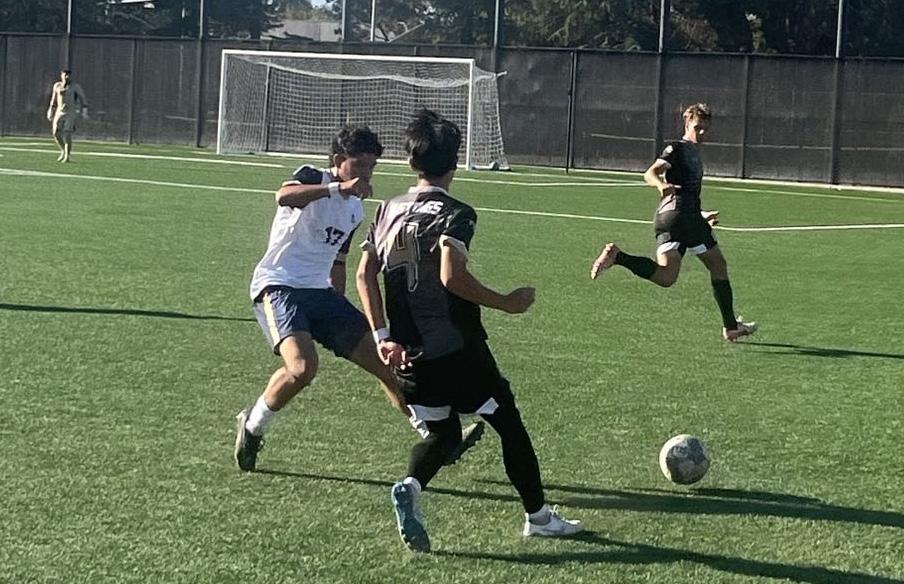
we played well and there was moments even in that first half where we could have had goals,” Guerra said. “I know we can